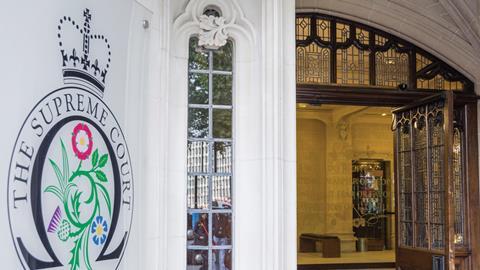High Principle, Low Politics, and the Emergence of the Supreme Court
Frederic Reynold
Wildy, Simmonds & Hill Publishing, £14.95
146pp, ISBN 9780854902835
Frederic Reynold QC must feel as if he'd written Greatest Moments in English Cricket - and published it last June. By timing his account of the origins of the Supreme Court for this month's 10th anniversary, Reynold has perforce missed the climax of the story, last month's prorogation judgment. Nonetheless, I hope venerable legal publisher Wildy has upped its usual print run: I can see this handy paperback flying off the shelves over the coming months.
Alas for the author's evidently Whiggish intentions, many readers will be looking for ammunition to attack the UK's apex court. And this book provides plenty for those who say that, even by the back-of-a-fag-packet standards of the UK constitution, the court's creators were winging it a bit.
It all began with Lord Bingham, who, in his annual Justice lecture 2001, set out his thoughts on judicial independence and the separation of powers; presumably the 'high principle' of the title. Low politics then kicked in, with Tony Blair's Constitutional Reform bill and its infamous proposal to abolish the office of lord chancellor. Reynold is at his best with his accounts of the lords and commons debates and committee proceedings, with many memorable quotes.
For younger readers - my straw poll of highly intelligent and educated twenty-somethings in Chancery Lane revealed little knowledge of what went on before the Supreme Court existed - this will be a useful constitutional history primer. For the rest of us, it will be a fond trip down memory lane. Though who remembers now that this seismic shift in the UK constitution was introduced in the commons by Chris Leslie MP, at the time a junior minister in the short-lived Department for Constitutional Affairs?
And who recalls these words, from a Conservative opponent? 'The bill creates a costly and unnecessary Supreme Court exercising the same functions as the current law lords; is based on the false premise that the separation of powers between the judiciary and the legislature requires the physical removal of the Law Lords from parliament'. Yes that was Dominic Grieve MP who, emboldened by an intervention from Tory colleague Edward Garnier MP, went on to say that he 'couldn't give a fig' for the separation of powers argument and that its originator, Montesquieu, had simply misunderstood the way the system worked.
Of course the bill passed, receiving Royal Assent on 24 March 2005 just before Blair's third general election victory. Reynold deals briskly with the remaining controversies over the practicalities of setting up a court from scratch; where it would sit and at what cost, what the justices would wear and even whether they should continue the law lords' practice of taking their seats before the advocates entered the room. In resolving all this, Reynold concludes that what he describes as 'micromanagement' paid off. Current president Lady Hale receives much of the credit, for example being one of the first to see the potential of the gloomy old Middlesex Guildhall building, given a £56m lick of paint. (Her vision was certainly better than mine: in years of covering Westminster and Whitehall, and despite fancying myself as a history buff, I don't think I ever noticed the place.)
Again, while younger readers may wonder what the fuss was about, those with longer memories will recall that the court could easily have become a national joke. Credit for escaping that fate, Reynold concludes, goes to the quality of its judgments rather than to politics or PR. To critics who predicted that the new institution would intrude into areas into which it had no business , he says experience shows the answer to be 'an emphatic no'.
But that was before 24 September 2019. If the game has now changed, we can only hope that future intakes of Supreme Court justices are up to the task.



































1 Reader's comment